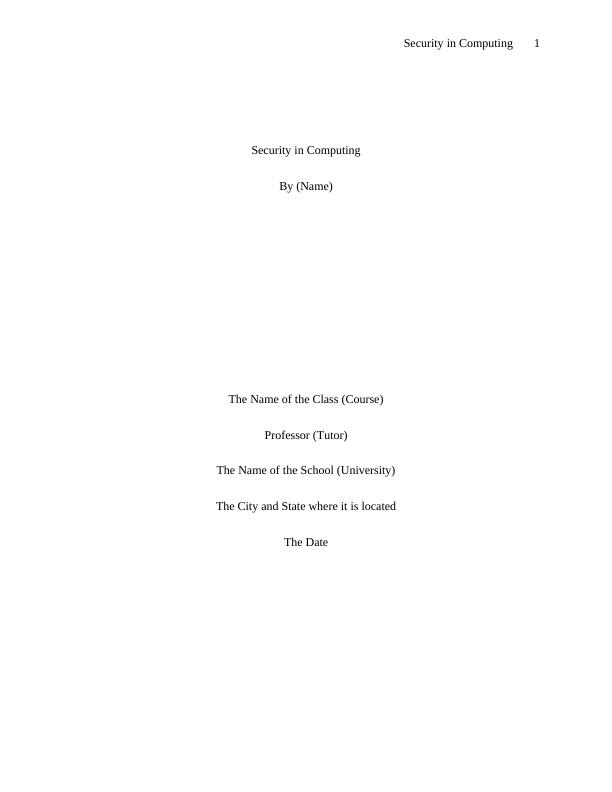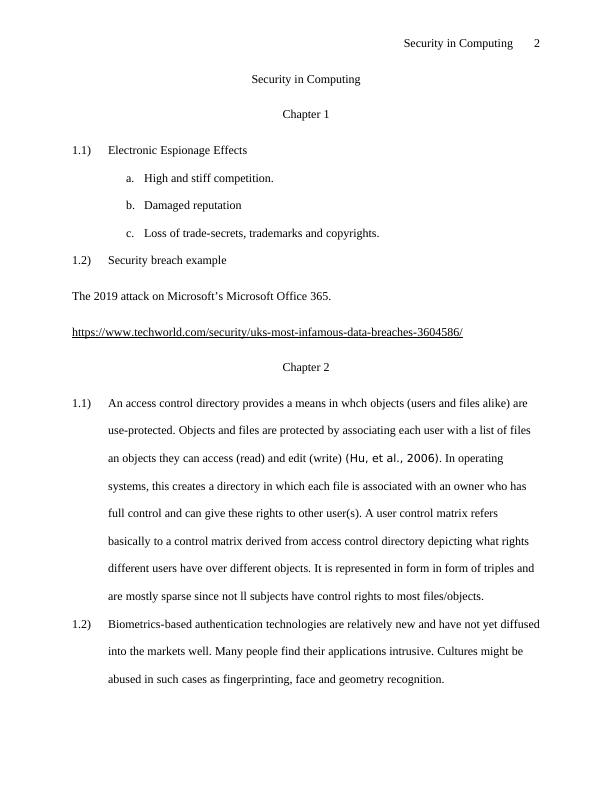Security in Computing: Electronic Espionage, Access Control, Encryption, Viruses, Web Security, and Network
This assignment covers various topics in information security, including electronic espionage, access control, biometrics, cryptography, buffer overflow errors, and virus attachment to files.
8 Pages1514 Words266 Views
Added on 2022-10-10
About This Document
This document covers various topics related to security in computing such as electronic espionage, access control, encryption, viruses, web security, and network. It also includes countermeasures for identification and authentication attacks and a bibliography.
Security in Computing: Electronic Espionage, Access Control, Encryption, Viruses, Web Security, and Network
This assignment covers various topics in information security, including electronic espionage, access control, biometrics, cryptography, buffer overflow errors, and virus attachment to files.
Added on 2022-10-10
ShareRelated Documents
End of preview
Want to access all the pages? Upload your documents or become a member.
Comparison of MD5 and SHA3 Hashing Techniques
|13
|3475
|89
Crypto Hashes and PKI Cryptography Assignment
|5
|1391
|186
Introduction to Cryptography and Security Mechanisms
|33
|5553
|256
Principles and Methods in Cryptographic Security | PPT
|12
|646
|11
Network Security: Report on OSI Security Architecture and Cryptographic Algorithms
|16
|2776
|371
Security in Cryptography | Assignment
|7
|1502
|13



